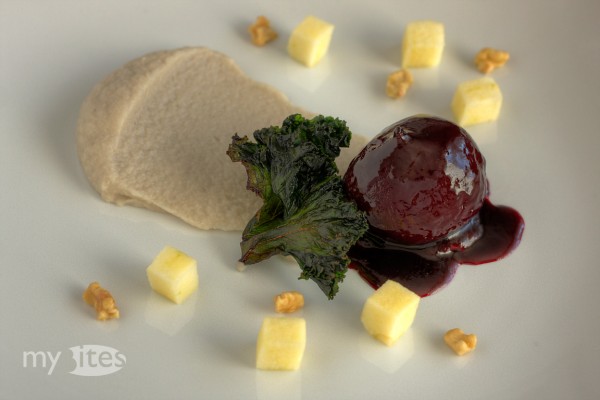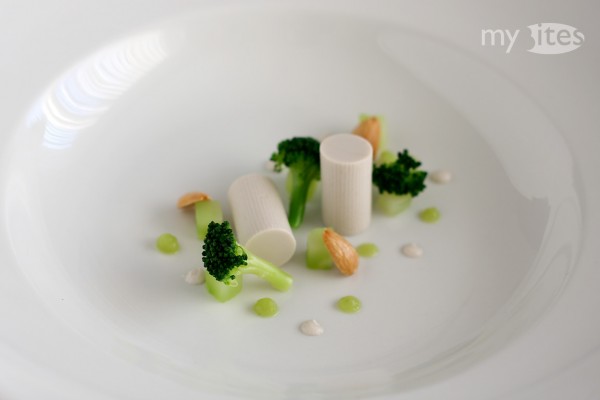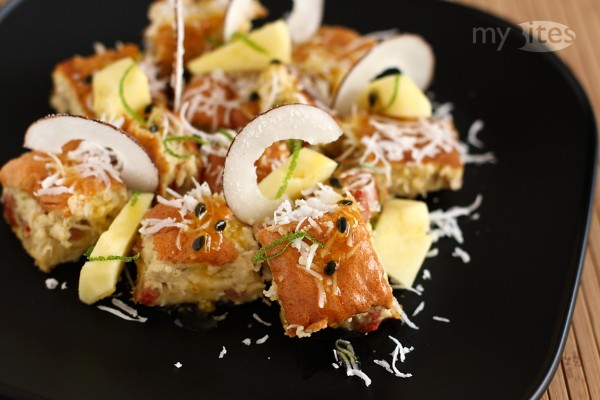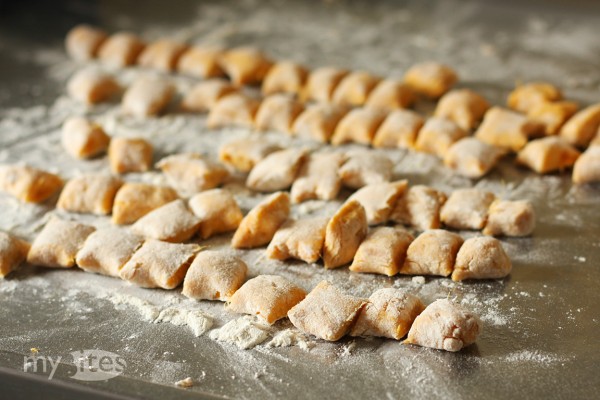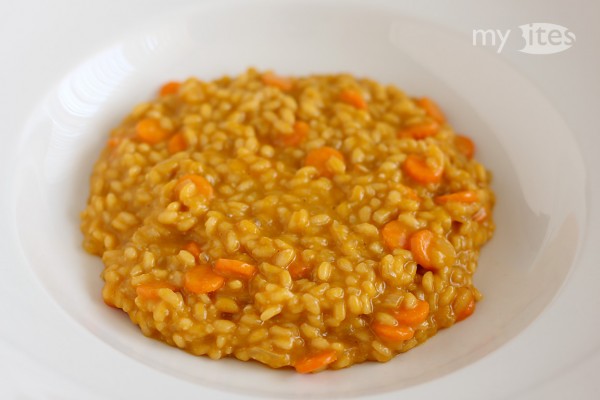If you open a cookbook about classic french cooking you will find recipes for several sauces. Except for vinaigrettes, almost all sauces contain either milk, eggs or animal bones. So while I was exploring vegan cooking, my idea was to figure out whether it is possible to create a rich brown sauce by using vegetables only. My result was more than satisfactory. I didn’t taste the same as sauces prepared with animal parts, but this rich vegan brown sauce works great for coating or glazing baked or roasted vegetables.
Category Archives: Vegetarian
Broccoli Soup with Almond Milk and Roasted Almonds
Exploring how far I can take vegan food was only one of my motivations for creating a vegan menu. The other impulse originated from a documentary I came across recently. Forks over Knives takes a critical look at the western diseases from the perspective of the people’s diet. The main message of the documentary is that there is a direct causal relationship between the excessive amounts of meat, dairy products, sugar and fat consumed in our western diet, and the still increasing diseases of our era such as diabetes, heart attacks, strokes and cancer. According to the doctors and researchers featured in the film, all these diseases can be avoided and even cured by a whole-foods, plant-based diet.
Chestnut-filled Cabbage with Sunchoke and Cabbage-Tapioca
Nana, a vegetarian friend of mine, announced a vegetarian month, which aims to motivate people to prepare and eat a meatless meal at least once during this month. Besides eating less meat, hopefully the participants will also think a little bit about the vegetarian diet and probably notice that meat does not need to be present on the plate every day. All submitted recipes participate in a contest, where the winner gets an invitation to nana for a vegetarian dinner. Originating from nana’s call for recipes, I took the opportunity to give a thought not only about the vegetarian, but also about the vegan diet.
Caribbean Coconut Kaiserschmarrn
What if Austria was located in the Caribbean? Perhaps, it could be a nice tropical island. Well, obviously you wouldn’t plan your ski holiday there. Apart from winter sports and from a more culinary viewpoint, Austria is most famous for its huge variety of delicious pastries. Perhaps one of the simplest and most popular desserts is the so called Kaiserschmarrn: a light and fluffy batter made with separately beaten eggs, which results in something between a soufflé and a pancake. According to the story of this dessert, it was first prepared and served for Emperor Franz Joseph I during the 19th century, who also gave the name to this dish. Now imagine the Austrian Emperor Franz Joseph I and his beloved wife Sissi sitting at the beach under a palm tree somewhere in the Caribbean. Obviously they won’t be eating their Kaiserschmarrn with apple puree, but rather use tropical fruits instead, like coconut, pineapple or passion fruit. Maybe the result would look somehow like this Caribbean Coconut Kaiserschmarrn.
Sweet Potato Gnocchi with Cinnamon Ice Cream
Next to blackberries, quince is my most favorite fruit. Although it resembles a pear or an apple, it is far too hard and sour to be eaten raw. However, if you cook quince almost indefinitely it not only turns to a lovely pink or red color, but also develops an irresistibly rich flavor. Unfortunately, the season for quince is quite short during autumn, but you can keep the jam, puree or quince jelly for several months. It pairs great with cheese, however, this time I used the quince puree in a dessert paired with another typical autumn and winter ingredient: sweet potato.
Butternut Squash Risotto
While peeling and cleaning a pumpkin or butternut squash, the skin and the seeds usually get discarded. From one point of view this is somehow understandable, because neither the hard skin, nor the stringy seeds have a pleasant texture. On the other side, they are edible and contain a lot of flavor, so it would be favorable to use the “waste” somehow. I had the idea to add the discarded pumpkin seeds and skin parts to a vegetable stock. The resulting orange colored stock can be added to a butternut squash soup, used for cooking pumpkin cubes or cylinders, which might also be blended into a fine puree – or for making this ultimate butternut squash risotto.
